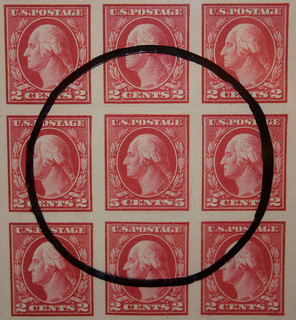Keys to Self-Publishing a Book: Copy Editing
Biff Barnes
The draft of the book you plan to self-publish is finished. Your beta readers have offered good feedback on the book’s content. You have revised and edited the manuscript until it’s as polished as you can make it. You are ready to send the files off to the printer. But wait! It needs a thorough careful copy edit before it goes anywhere.
 Courtesy of dbking under Creative Commons
Courtesy of dbking under Creative Commons
“Copyediting is what turns an amateurish book into a polished, professional one,” says bestselling author Guy Kawasaki in his new book on self-publishing, APE: How to Publish a Book.
He offers a cautionary tale about one of the big five traditional publishers, Penguin. “In 2010, Penguin Australia published a book called The Pasta Bible. The recipe for tagliatelle called for “salt and freshly ground black people.” Penguin had to destroy seven thousand copies because of this gaffe…” Kawasaki’s own copy editor found 1,500 errors in his manuscript after “…upward of seventy-five people reviewed the manuscript, and [co-author] Shawn [Welch]and I read it until we were sick of it.”
What’s a self-publishing author to do?
Anna Lewis, who offers some tips for self-publishers on PBS Media Shift explains the problem, “You're so familiar with the text that you see what you think you have written rather than what you actually wrote.”
Here are seven ideas that will improve your copy editing.
- Use a style manual to make sure you are correct. Depending upon the type of book you are writing The Chicago Manual of Style, The Associated Press Stylebook, The MLA Handbook or Strunk and White’s The Elements of Style might best suit your content. Choose the one that’s appropriate for your book and rely on it as the last word on correctness. Use it as you copy edit your text.
- Know your own weaknesses. All of us have errors we commonly make. They may be misspellings (or substitutions of incorrect homonyms), a tendency to repeat words, or mistakes in punctuation. Be aware of them. Look carefully for those errors as you review your draft.
- Work from a printed version of the text. While it might seem quicker and more efficient to make corrections on your screen you’ll miss errors doing so. Working from a hard copy will help you catch them.
- Read your text aloud. The sound of your voice will help you find mistakes you missed when you read the same text silently. For one thing you have to concentrate more carefully on both words and punctuation to read aloud. Anna Lewis suggests using text to speech software that will read your text to you. I have never tried it, but it’s an interesting idea.
- Read your manuscript backwards. The key to good copy editing is separating the words from the content. Reading in reverse does that. It can be a bit strange the first time you try it, but it works.
- Check each punctuation mark. This is a place where your style manual is a useful tool. For example, you might use it to create a cheat sheet with comma rules to employ as you go through the manuscript. Refer to the manual when you aren’t absolutely certain about the correct punctuation.
- Create a list of proper names in the book. One of the most difficult errors to catch is with proper names. The spelling of names may be unfamiliar. If you create a list with correct spellings before you begin your copy edit and check those names in the text against the list you can avoid embarrassing errors.
Employing these suggestions will help you catch more of the errors you don’t want to slip into print. But they probably won’t match what a professional copy editor would do. As David Carnoy, himself a self-published novelist, said in his blog on CNET in a post titled Self-Publishing a Book: 25 Things You Need to Know, “If you're serious about your book, hire a book doctor and get it copy edited.” A professional copy editor can make sure your self-published book looks professional. That’s a necessary first step on the way to a successful book.